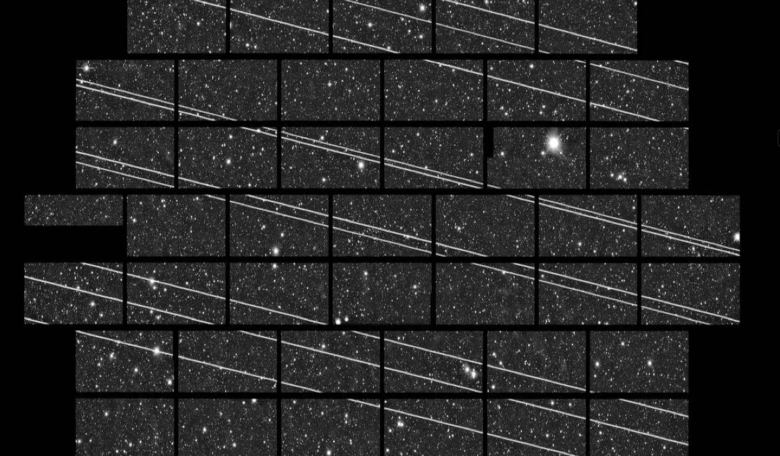Over 250 astronomers attending a virtual workshop on the impact of satellite mega constellations have warned that the 100, 000 or more low-Earth satellites expected to be deployed in mega constellations by companies and governments alike will will “fundamentally change” astronomical observations, and not for the better.
When SpaceX started lofting the first 60 Starlink satellites of their intended 42,000+ mega constellation into low Earth orbit back in May 2019, astronomers got worried really quick as the trails left by the satellite trains racing through the night skies were plainly evident.
Springing into action to understand the full impact this and other similar projects will have on the field, astronomers have now shared the results collated during the Satellite Constellations 1 (Satcon1) workshop held virtually on 29 June–2 July 2020.
Using computer simulations to examine how satellite constellations such as those by SpaceX could affect the operations of Earth-based observatories once fully deployed, the workshop identified a number of immediate issues.
Most at risk is optical (visible) and near-infrared (NIR) astronomy; this is self evident when you look at streaks spanning the widths of astronomical images when several Starlink Satellites cross the field of view of telescopes.
Instruments such as the Dark Engery Camera at the Cerro Tololo InterAmericam Observatory are already afflicted but upcoming space observatories like the Vera C. Rubin Observatory that will peer deep into the history of the Universe are also expected to suffer the same fate if nothing is done to mitigate the problem.
Also highly impacted are science programmes that require twilight observations, such as searches for near-Earth objects (NEOs), distant Solar System objects, rare transients, exoplanet transits in wide-field surveys and deep multi-object spectroscopic surveys.
Basically, if you can name an astronomical phenomena, chances are observations of it will be marred by unnatural light projected off the satellites; an issue most prevalent near the horizon and during twilight says the report issued Tuesday.
And it’s also not professional institutions that are getting a raw deal; astrophotography, amateur astronomy, and the human experience of the stars and the Milky Way are already affected.
“Nighttime images without the passage of a Sun-illuminated satellite will no longer be the norm,” the report adds.
The worst offenders are satellites at altitudes above 600 kilometres. Brightness problems are apparent at all altitudes, but constellations at higher altitude can be visible all night long during summer.
Even if you can’t see them very well with the naked eye, satellites still have the potential to induce systematic errors in science investigations. Images will have to be manipulated by novel software packages to remove the satellite trails - if that is possible, astronomers say.
All in all, the outcome of the report appeared gloomy. “No combination of mitigations can fully avoid the impacts of the satellite trails” it stated.
The report did, however, outline six approaches that might reduce the damage faced by astronomical observations, including; deploying satellites at orbital altitudes no higher than ~600 km, controling each satellite’s attitude in orbit so that it reflects less sunlight to Earth and darkening satellites by lowering their albedo.
This latter point is being addressed, to some degree by SpaceX who have painted a small number of satellites black twisted the position of their solar panels to make them less visible.
But, says the report, if companies truly want to achieve zero impact on optical-NIR astronomical observations, then the only option is to launch fewer or no LEOsat constellations.
How many of the modelled 33,000 satellites at 600 km (or below) and the 47,844 satellites at 1200 km altitude are actually deployed remains to be seen, especially as OneWeb’s future is somewhat uncertain at present. SpaceX though certainly does not seem to be slowing down on its launches.
The report does acknowledge that changes are required “at both ends,” and that observatories will also need to adapt to overcome the difficulties faced with growing numbers of constellations.
Nonetheless, those who attended the conference explain that many added measures by astronomers to mitigate the problem, “will be ineffective for many science programs."











